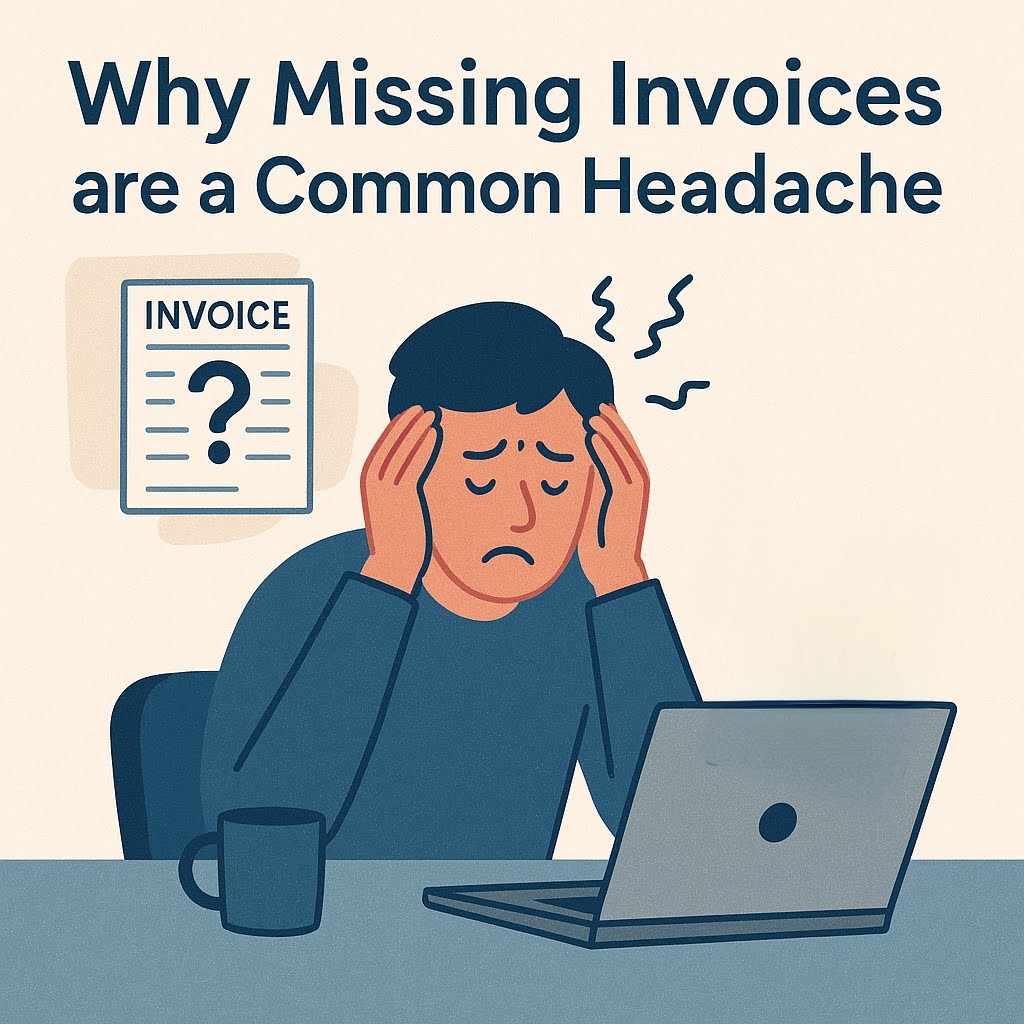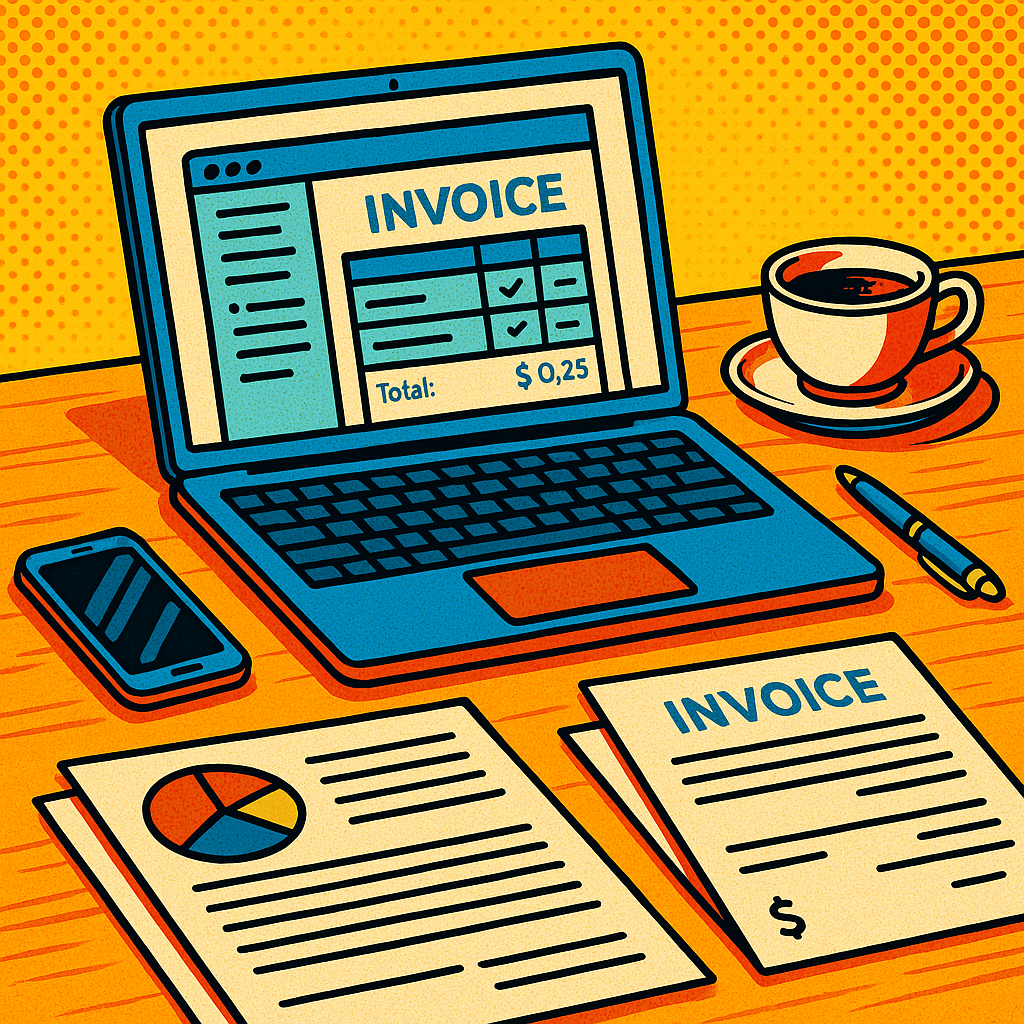Understanding the Basics: What Is an Invoice?
Picture this: you’re wrapping up a major project, and the only thing standing between you and that hard-earned payment is an invoice. Ever wondered why this simple document holds such sway in the business world? Invoices are more than just requests for payment—they’re crucial records that facilitate clear communication and financial transparency between businesses.

An invoice, at its core, is a detailed description of the goods or services you’ve provided, complete with pricing and payment terms. But here’s where things get interesting; the structure and detail of an invoice can say a lot about a business’s professionalism and attention to detail. A well-crafted invoice not only ensures you get paid on time but also strengthens trust with your clients, reassuring them that their finances are in capable hands.
Now, let’s think about the chaos when invoices go missing—how do you even begin to find a solution? That’s where services like InvoiceGenie come into play. They specialize in creating missing invoices seamlessly, eradicating the hassle of chasing down documentation.
Perhaps you’re wondering if all invoices are created equal? Not quite. The type of invoice you send can vary, depending on the nature of the transaction: standard, credit, pro forma, and even recurring invoices, each serving distinct purposes. For businesses looking to streamline their invoicing process or tackle missing invoices, turning to specialized resources like these articles on missing invoice challenges and solutions is a step in the right direction.
Want more tips on making your invoicing process more efficient? We’ll dive deeper into those details, along with expert strategies and tools to keep your cash flow steady and your clients happy throughout the rest of this article.
Invoices: The Backbone of Business Transactions
In the fast-paced business environment, the humble invoice might seem like just another formality, but it’s actually a linchpin in effective financial management. Let’s break down the components that make a solid invoice. Remember the last time we discussed this in our monthly review? It’s all about getting the details right: invoice number, date, item descriptions, and clear payment terms—each element is critical in avoiding any potential payment hiccups.
Key Components of an Invoice
Consider an invoice as your business’s handshake—a formal exchange of trust. But what happens when the handshake is a little off? Incomplete or incorrect invoices can lead to delayed payments or disputes. Keeping each invoice precise and easy to understand ensures a smoother transaction process. Just last month, I reviewed a case where a company significantly reduced payment delays by simply reorganizing their invoice layout for clarity. It was a game changer!
Types of Invoices
Let’s venture briefly into the types of invoices. Each type—standard, credit, pro forma, recurring—serves different transactional needs. For example, recurring invoices are fantastic for businesses with subscription models, streamlining repetitive billing and freeing up your team for more strategic tasks. Does it sound familiar to the conversation we had about recurring revenue models a few weeks ago? It’s an approach many SaaS companies swear by. For more detailed insights, you might find it useful to explore this Wikipedia entry on invoices for additional context.
Finally, consider leveraging technology to make the process less painful. Tools like InvoiceGenie’s invoice generator can drastically enhance efficiency, ensuring accurate and professional invoices every time. As we continue, I’ll offer some tips and tricks on maximizing these tools effectively.
Challenges in Invoicing and How to Overcome Them
Now, you might be thinking, “Invoices are straightforward, so what’s the big deal?” But here’s the thing: invoicing comes with its fair share of hurdles that can stump even the savviest businesses. Let’s face it, mistakes happen—sometimes invoices go mysteriously missing or payments are inexplicably delayed. It’s not just frustrating; it’s costly. Sound familiar?
Common Invoicing Mistakes to Avoid
One of the most common pitfalls is overlooked details—incorrect invoice numbers or missing contact information can lead to a quagmire of confusion. Think about that time you had to backtrack through emails to figure out which invoice corresponded to which client. Not exactly the best use of your time, right? Ensuring every detail is accurate from the get-go can save a lot of headaches down the line.
Handling Missing or Delayed Invoices
And then there are the dreaded missing invoices. I recall a chat over coffee where we discussed a client who could never seem to keep track of their paperwork—constantly lost invoices. When missing, invoices stall cash flows and create an administrative bottleneck. Lucky for us, technology lends a hand. InvoiceGenie is a perfect example of a tool that tackles this directly, allowing for seamless creation and storage of invoices, eliminating the constant fear of some paperwork black hole.
Utilizing InvoiceGenie for Missing Invoices
But skepticism is healthy; you might wonder if these tools truly make a difference. Consider exploring our detailed guide on mastering invoice requests, which provides practical insights into overcoming these challenges. With digitization on an upward trend, embracing these tools isn’t just a convenience—it’s becoming an industry standard. So the next time you catch yourself worrying about an invoice gone astray, remember there are solutions at your fingertips.
Streamlining Business Finances with Efficient Invoicing
So, here we are, full circle—from the rudimentary understanding of invoices to unraveling the complex challenges they can bring. Remember how we likened an invoice to a business’s handshake? It’s more than just a metaphor; it’s a strategic point of engagement. Crafting precise and timely invoices isn’t just about getting paid; it’s about nurturing trust and professionalism in every transaction. And that’s no small feat!
As we’ve discussed, the intricacies of invoicing go beyond face value. To really thrive, businesses must pivot from traditional methods and harness technology’s potential. Solutions like InvoiceGenie simplify the invoicing process by creating and managing invoices smoothly, ensuring that those minor annoyances are ironed out before they snowball into major obstacles.
Final Thoughts
Now, lean back in your chair and think about how you can integrate these insights into your daily workflow. Could your invoicing process use a tune-up? Maybe it’s time to explore new tools or tweak your current system for greater efficiency. And who knows, this could be the missing piece that transforms your business operations from merely effective to truly exceptional.
Perhaps you’re wondering how all this fits into your grand scheme? Well, consider this: taking control of your invoicing is more than just an operational imperative; it’s about fostering a solid financial foundation that empowers growth and sustainability. So, next time you’re drafting an invoice or troubleshooting a billing issue, think back to this conversation. Trust in the process, leverage the right tools, and watch how these small tweaks lead to substantial changes. Who knew invoices could hold so much potential, right?
As always, the decision is yours, but hopefully, you’re viewing invoicing in a whole new light. After all, every revolution begins with a single step—or, in this case, a single invoice.
Frequently Asked Questions
1. What is the primary purpose of an invoice?
In our article, Understanding the Basics: What Is an Invoice?, we explore the primary function of an invoice as a detailed document that facilitates transparent financial transactions between businesses, ensuring both parties have a clear record of the exchange.
2. What are the key components that make an invoice effective?
In the section Invoices: The Backbone of Business Transactions, we discuss essential elements such as the invoice number, date, item descriptions, and payment terms, which help in avoiding payment delays and strengthening business relationships.
3. How can I deal with missing invoices?
The section Handling Missing or Delayed Invoices elaborates on solutions for dealing with lost invoices. Utilizing tools like InvoiceGenie can simplify the process of creating and managing invoices, ensuring that all your documentation is up-to-date. For a more in-depth approach, check out our guide on tackling missing invoices solutions and challenges.
4. What are the different types of invoices mentioned in the article?
In the article, we cover different Types of Invoices, such as standard, credit, pro forma, and recurring invoices, each tailored to meet specific transaction requirements. Understanding these types can help businesses implement more efficient billing practices.
5. Why is it important to streamline the invoicing process?
As discussed in the Conclusion, streamlining your invoicing process is crucial for fostering trust and professionalism in your transactions. Efficient invoicing not only enhances cash flow but also supports long-term business growth and sustainability.

